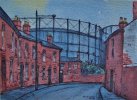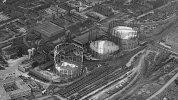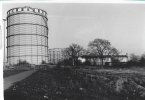-
Welcome to this forum . We are a worldwide group with a common interest in Birmingham and its history. While here, please follow a few simple rules. We ask that you respect other members, thank those who have helped you and please keep your contributions on-topic with the thread.
We do hope you enjoy your visit. BHF Admin Team -
HI folks the server that hosts the site completely died including the Hdd's and backups.
Luckily i create an offsite backup once a week! this has now been restored so we have lost a few days posts.
im still fixing things at the moment so bear with me and im still working on all images 90% are fine the others im working on now
we are now using a backup solution
You are using an out of date browser. It may not display this or other websites correctly.
You should upgrade or use an alternative browser.
You should upgrade or use an alternative browser.
Gas Holders in Birmingham
- Thread starter norfolk brummie
- Start date
kateminter
New Member
Some years ago my dad, Norman Williams, wrote these words about his time working for the Gas Board in Birmingham (1948-52).
'I applied to the Birmingham Corporation Gas Department as they wanted men to train and work in their laboratories. The applicants should have a school certificate in Maths, Physics and Chemistry. I was offered a job as a junior chemist. I started at the Central Laboratory on the Gasworks at Nechells at the beginning of April 1948.
My first morning job was to go on the roof of the Central Laboratory and record data including maximum and minimum temperature in degrees F, wet / dry bulb temps i.e. humidity, barometric pressure and wind speed – I’ve maintained an interest in weather since then. Weather conditions often determined gas demands and helped to predict demands. Other work included analysing coals, cokes, viscosity of tars, flashpoints of tars, calculating British Thermal Units (BThUs) of gases i.e. heat values using a Boys Calorimeter Test'.
Unfortunately dad's memory is not so good (he is 95) but he was interested when I told him about the demolition of the gas holders at Windsor Street
'I applied to the Birmingham Corporation Gas Department as they wanted men to train and work in their laboratories. The applicants should have a school certificate in Maths, Physics and Chemistry. I was offered a job as a junior chemist. I started at the Central Laboratory on the Gasworks at Nechells at the beginning of April 1948.
My first morning job was to go on the roof of the Central Laboratory and record data including maximum and minimum temperature in degrees F, wet / dry bulb temps i.e. humidity, barometric pressure and wind speed – I’ve maintained an interest in weather since then. Weather conditions often determined gas demands and helped to predict demands. Other work included analysing coals, cokes, viscosity of tars, flashpoints of tars, calculating British Thermal Units (BThUs) of gases i.e. heat values using a Boys Calorimeter Test'.
Unfortunately dad's memory is not so good (he is 95) but he was interested when I told him about the demolition of the gas holders at Windsor Street
Last edited:
We could see the Nechells ones from our bedroom window in Hodge Hill Also had a good view of the cooling towers , although from ground level you would never have known they were there.1. Are there any gasometers still standing in Birmingham? I remember some at Saltley, Aston and one other place, was it Washwood Heath?
2. Do you all remember how natural gas was the ultimate solution to our heating and etc needs?
3. Remind me how was gas made, was coke involved?
Bob
With the last of the Birmingham Gasholders almost now gone, I thought I would post this Brief Introduction to Gasholders – Everything You wanted to know about gasholders but were afraid to ask.
oldMohawk
gone but not forgotten
Gasholders ... reminds me of the forum mystery gasholder. I thought I had found it in Leeds but no luck. It is in the link below
https://birminghamhistory.co.uk/for...en-photos-with-no-locations.45202/post-551422
https://birminghamhistory.co.uk/for...en-photos-with-no-locations.45202/post-551422
Eric Gibson
master brummie
Your gas holder link popped this up on my computer on a red page Morturrn
Go back
More information
Microsoft Defender SmartScreen
This site has been reported as unsafe
Hosted by heritagecalling.com
Microsoft recommends you don’t continue to this site. It has been reported to Microsoft for containing misleading content that could lead you to lose personal info, financial data and even money.Go back
More information
Microsoft Defender SmartScreen
Terence David Lines
master brummie
Only ones I remember were the ones in Saltley, for some reason did the number 8 inner circle bus go past them. This is the only way I think I would have past them as a child . I think the outer circle 11 bus would have been on a route further out the city. You could smell when you we’re getting close.
brummy-lad
master brummie
I can still recall vividly this view from the upper deck of the No. 8, can you imagine the view from the back windows of the houses.Only ones I remember were the ones in Saltley, for some reason did the number 8 inner circle bus go past them. This is the only way I think I would have past them as a child . I think the outer circle 11 bus would have been on a route further out the city. You could smell when you we’re getting close.
Attachments
cookie273uk
master brummie
mw0njm.
A Brummie Dude
no probs with site thanks morton

 heritagecalling.com
heritagecalling.com

A Brief Introduction to Gasholders
Gasworks once brought light and warmth to homes across England. Hundreds of their most prominent landmarks – gasholders – are now being demolished and lost from the landscape forever.
Birmingham Gas Peter Walker
In a sense Birmingham is the home of gas, as William Murdock came from Cornwall in 1777 to join Boulton and Watt at the Soho Manufactory, where he discovered the use of coal gas for lighting, and gave a public display at the Soho works for the celebration of the Peace of Amiens in 1802. A year...
birminghamhistory.co.uk
Last edited:
brummy-lad
master brummie
As a laboratory assistant in the late 60s one of my jobs was to analyse various suitable 'smelly' chemicals to put into natural gas, so I suppose you get immune to it eventually.i lived close by the g/works and got used to the stink
mw0njm.
A Brummie Dude
was one essence of rotten eggsAs a laboratory assistant in the late 60s one of my jobs was to analyse various suitable 'smelly' chemicals to put into natural gas, so I suppose you get immune to it eventually.
brummy-lad
master brummie
Smells from all sources were tried so I wouldn't be surprised. I imagine I'm going off topic now and don't want my hand slapped.was one essence of rotten eggs
mw0njm.
A Brummie Dude
a bit more gas holder geekness
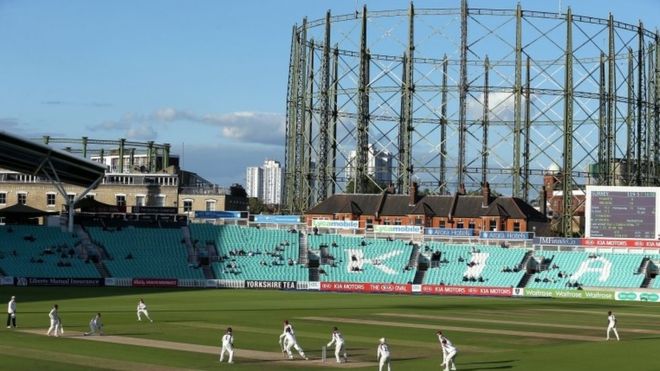
 www.designingbuildings.co.uk
www.designingbuildings.co.uk

Gas holder
Gas holder - Designing Buildings - Share your construction industry knowledge. Gas holders are typically Victorian-era containers used in urban areas to store large volumes of gas, usually from nearby gasworks. Natural, or town, gas would be stored near atmospheric pressure at ambient...
With the framed gasholders common in Birmingham, there was indeed quite a hole that was filled with water. If you imagine the gasholder to be like an upturned tin can, it did not displace much water as the gas was used up and it sank down.was the tank floating in water? there must have been one heck of a hole beneath a full tank, and where did the water go as the tank descends
There were of course both telescopic gasholders, like the one on the M6 just before Wolverhampton. There were also a few waterless gasholders where the floor inside would slide up and down. There was one in Coventry.
I once met a guy who had been inside the gasholders to knock out the dents. He had to craw through the gas main into the centre of the lake where a raft was anchored to the main where it stuck out of the water. He rowed across to the sides where he then used a big wooden sledgehammer to bash out the dents. He said it was only the inward dents he had to do, as these could cause the side of the gasholder to buckle under their own weight. Certainly, a job I would not fancy doing. I am sure he said they may have been damage in WWII. My grandfather worked at Nechells Gasworks also said they were damaged in WWII as well.
oldMohawk
gone but not forgotten
National Grid video of Windsor Street Gasholders.
My great-grandfather was the manager of a small gas works in a small town. There was a single gas holder outside the boundary wall of the gasworks that survived the closure of the works after a high-pressure main was extended from a nearby larger town. I can just about remember the gas works in operation as my nana didn't like the smell of fish bones/waste so they got wrapped up then taken across the road to be put in a fire in the gas works.
After the gas works was demolished the perimeter wall remained and the site was still owned by the area gas board. When natural gas was introduced they used the compound to store rows and rows of obsolete gas cookers.
My great-grandfather was the manager of a small gas works in a small town. There was a single gas holder outside the boundary wall of the gasworks that survived the closure of the works after a high-pressure main was extended from a nearby larger town. I can just about remember the gas works in operation as my nana didn't like the smell of fish bones/waste so they got wrapped up then taken across the road to be put in a fire in the gas works.
After the gas works was demolished the perimeter wall remained and the site was still owned by the area gas board. When natural gas was introduced they used the compound to store rows and rows of obsolete gas cookers.
oldMohawk
gone but not forgotten
When we were looking for Mike's gasholder I started a pdf index for aerial photos of Britains gas works. For what it's worth here it is with 45 image links. It works in Edge and Chrome, click the gasworks name, usual pdf controls. When opened it can be saved.

For more detail about particular gasworks note the 'britainfromabove' number and go to their website..

For more detail about particular gasworks note the 'britainfromabove' number and go to their website..
Last edited:
Super stuff, thank you.When we were looking for Mike's gasholder I started a pfd index for aerial photos of Britains gas works. For what it's worth here it is with 45 image links. It works in Edge and Chrome, click the gasworks name, usual pdf controls. When opened it can be saved.
For more detail about particular gasworks note the 'britainfromabove' number and go to their website..
PS it works in Firefox too.
Here are a super set of photos from a social media site. Not seen images like this before, so am fascinated to see the gasholder under construction.
Photo caption:
1889 - Nechells Place Nechells Birmingham - The City Gas Works, better known as Nechells Gas Works was in Nechells Place - Image by Birmingham Old Prints, Photographs & Maps 1600 - 1900


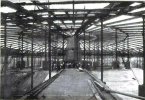

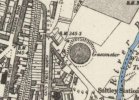
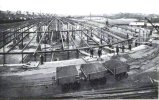
Photo caption:
1889 - Nechells Place Nechells Birmingham - The City Gas Works, better known as Nechells Gas Works was in Nechells Place - Image by Birmingham Old Prints, Photographs & Maps 1600 - 1900






Covroad
master brummie
A picture for the database is a picture of the Mannesman Gas Holder sited at Foleshill Gas Works Coventry, the design of this holder was unique; as they were waterless and had one module.Super stuff, thank you.
PS it works in Firefox too.
You could access the holder by a door at the top as they worked on a bicycle pump principle, where the piston would move up as the holder took on capacity, and moved down as demand grew.
Inside the holder and strung from the roof on pulley systems were concrete blocks which during town gas times would be lowered onto the piston to increase pressure on the network
The first time you entered the holder was quite surreal, but what a view of Warickshire from the top
Attachments
Covroad
master brummie
I can recall when you could walk from the WMGB garage in Duddeston / Saltley via Nechells gas yard and Holder site all the way to Bromford Road WMGB stores , etc and not leave WMGB land .
The route was from the garage under the bridge into Nechells yard over the old railway for the then Central Electricity Generating Board (CEGB) Station onto Bromford site parallel with the Tyburn Rd and come on to Bromford Road via the British Steel site .
The route was from the garage under the bridge into Nechells yard over the old railway for the then Central Electricity Generating Board (CEGB) Station onto Bromford site parallel with the Tyburn Rd and come on to Bromford Road via the British Steel site .


